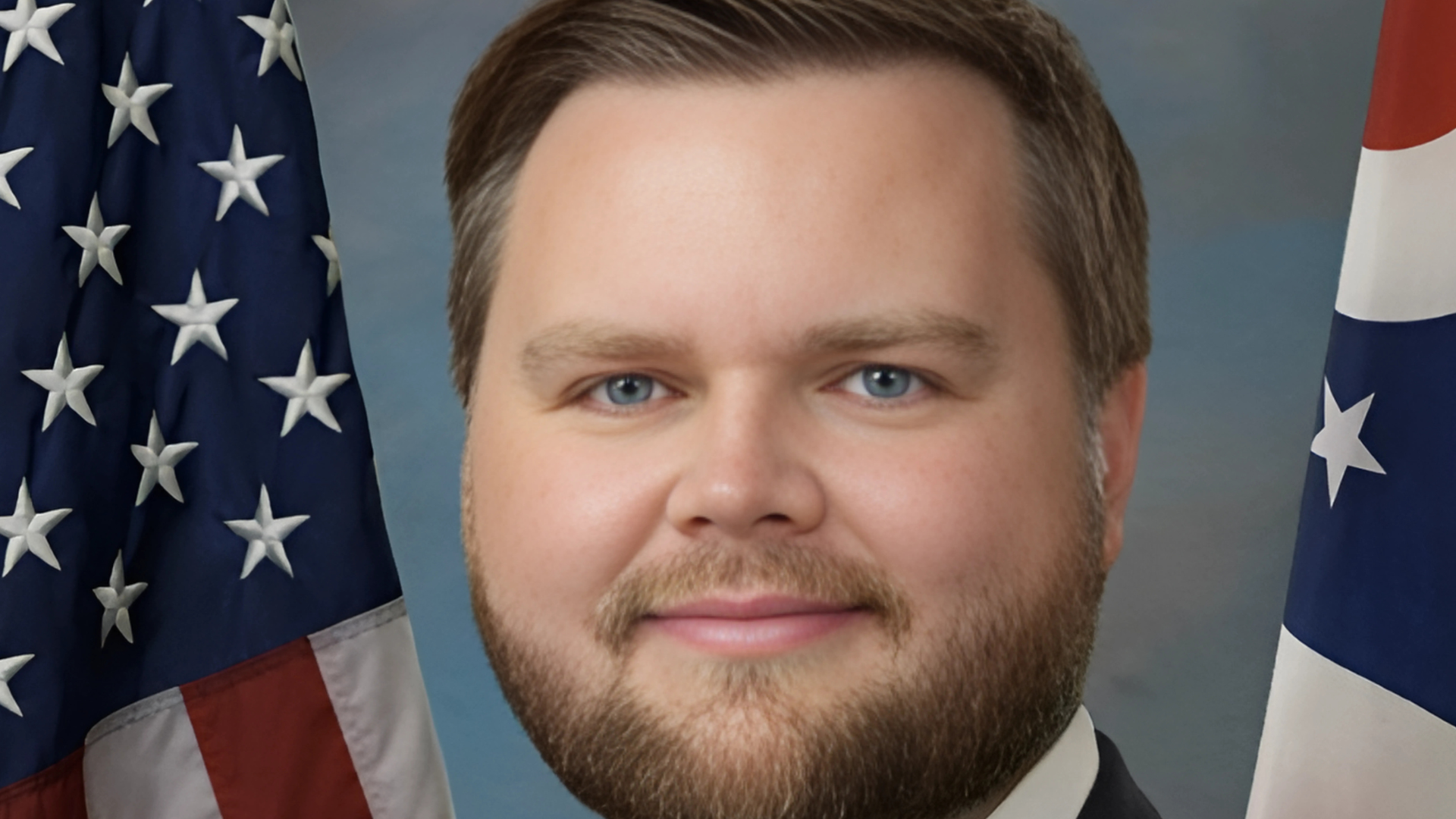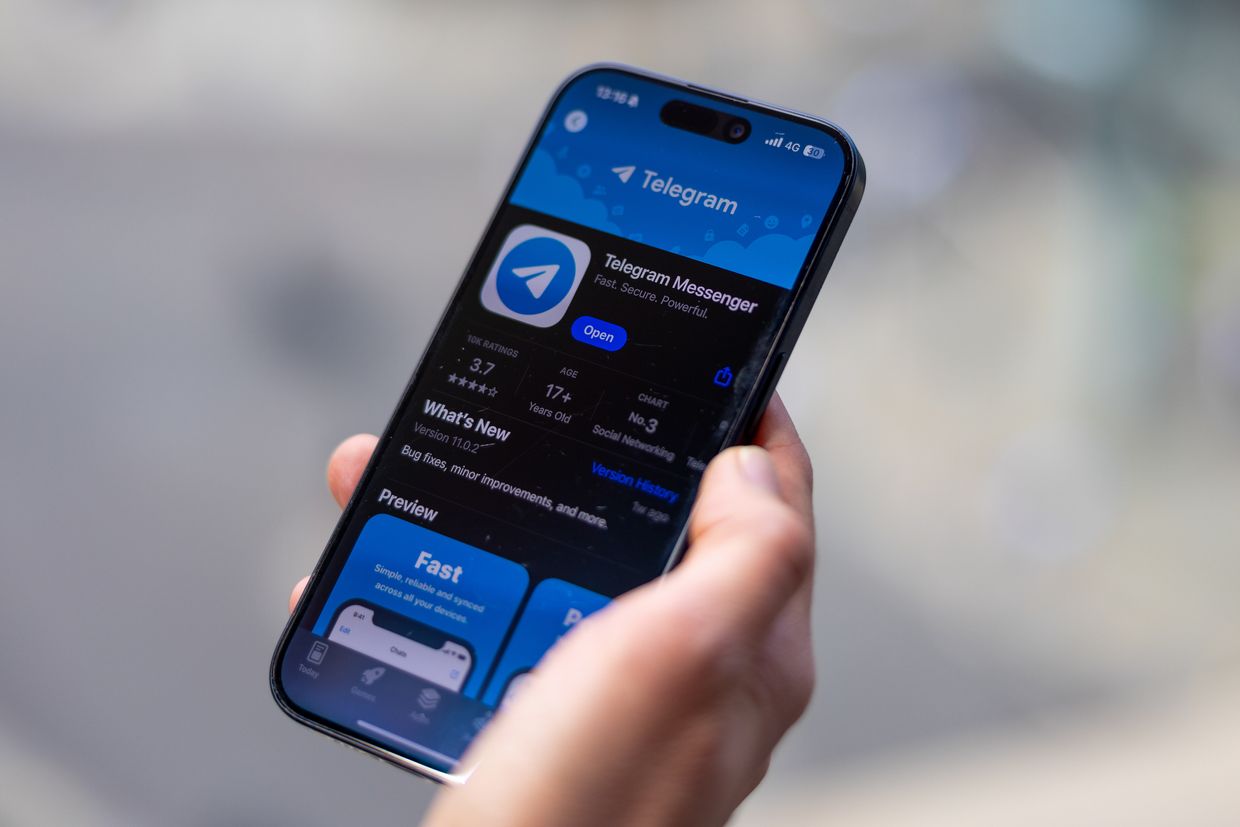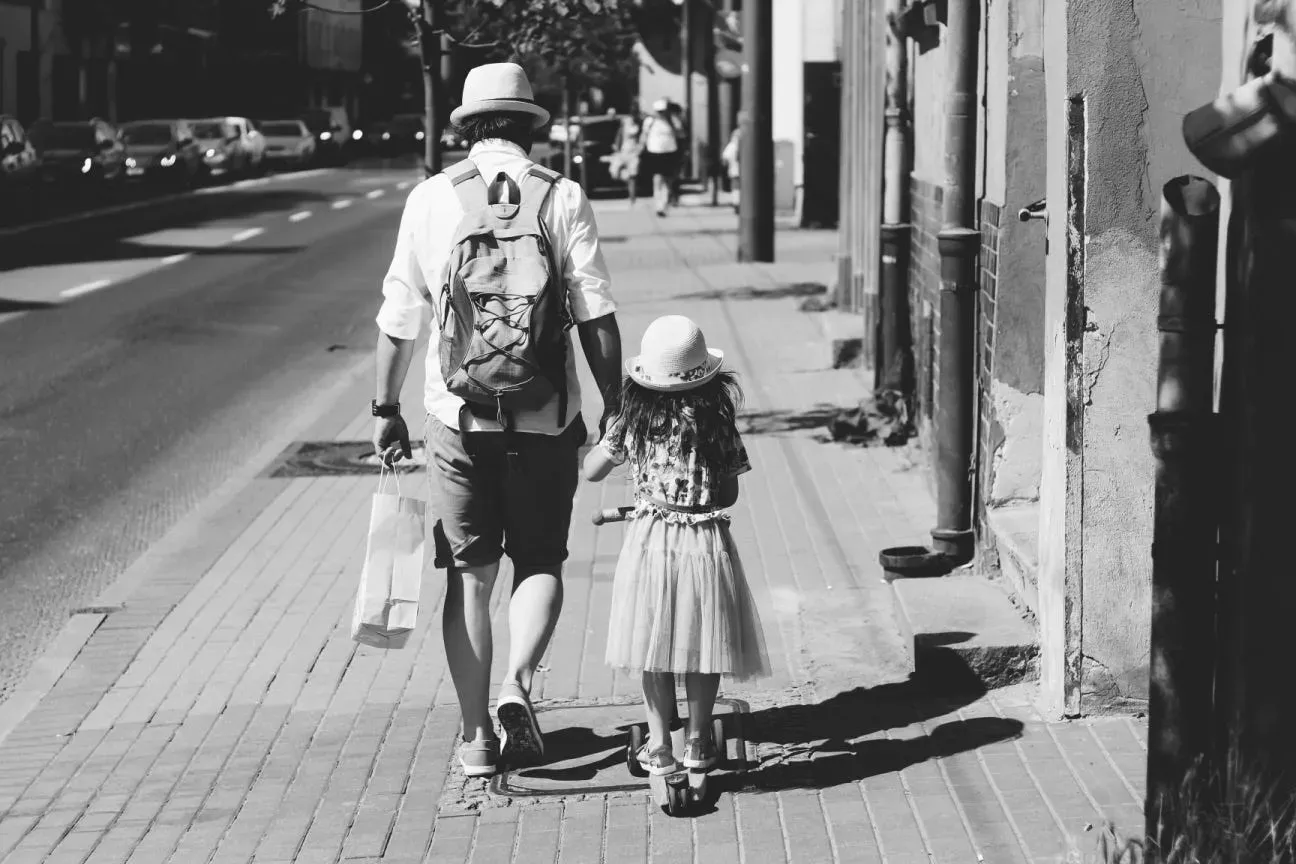Teenage Aviator Detained After Landing in Antarctica, Chile Says

© Salvatore Di Nolfi/Keystone, via Associated Press


© Salvatore Di Nolfi/Keystone, via Associated Press


© Pete Marovich for The New York Times


© Magali Druscovich for The New York Times


© Robyn Beck/Agence France-Presse — Getty Images


© Eric Lee/The New York Times


© Jenn Ackerman for The New York Times


© Jens Schlueter/Agence France-Presse — Getty Images


© Jahi Chikwendiu/The Washington Post, via Getty


On one side of the world, a very online guy edits a photo of then-Vice President Nominee JD Vance with comically-huge and perfectly round chipmunk cheeks: a butterfly flaps its wings. A year later, elsewhere on the planet, a Norwegian tourist returns home, rejected from entry to the U.S. because—he claims—border patrol agents found that image on his phone and considered the round Vance meme “extremist propaganda.”
“My initial reaction was ‘dear god,’” the creator of the original iteration of the meme, Dave McNamee, told me in an email, “because I think it's very bad and stupid that anyone could purportedly be stopped by ICE or any other government security agency because they have a meme on their phone. I know for a fact that JD has these memes on his phone.”
For every 100 likes I will turn JD Vance into a progressively apple cheeked baby pic.twitter.com/WgGS9IhAfY
— 7/11 Truther (@DaveMcNamee3000) October 2, 2024
On Monday, Norwegian news outlets reported that Mads Mikkelsen, a 21-year-old tourist from Norway, claimed he was denied entry to the United States when he arrived at Newark International Airport because Customs and Border Patrol agents found "narcotic paraphernalia" and "extremist propaganda" on his phone. Mikkelsen told Nordlys that the images in question were a photo of himself with a homemade wooden pipe, and the babyface Vance meme. (The meme he shows on his phone is a version where Vance is bald, from the vice presidential debate.)
the debat pic.twitter.com/wCkP1Bhnxy
— Spencer Rothbell is Looking For Work (@srothbell) October 18, 2024
McNamee posted his original edit of Vance as a round-faced freak in October 2024. "For every 100 likes I will turn JD Vance into a progressively apple cheeked baby,” he wrote in the original X post. In the following months, Vance became vice president, the meme morphed into a thousand different versions of the original, and this week is at the center of an immigration scandal.
It’s still unclear whether Mikkelsen was actually forbidden entry because of the meme. Mikkelsen, who told local outlets he’d been detained and threatened by border agents, showed the documentation he received at the airport to Snopes. The document, signed by a CBP officer, says Mikkelsen “is not in possession of a valid, un-expired immigrant visa,” and “cannot overcome the presumption of being an intending immigrant at this time because it appears you are attempting to engage in unauthorized employment without authorization and proper documentation.”
The U.S. Department of Homeland Security (DHS) wrote in social media posts (and confirmed to 404 Media), "Claims that Mads Mikkelsen was denied entry because of a JD Vance meme are FALSE. Mikkelsen was refused entry into the U.S. for his admitted drug use." Hilariously, DHS and Assistant Secretary Tricia McLaughlin reposted the Vance meme on their social media accounts to make the point that it was NOT babyface Vance to blame.

Earlier this week, the State Department announced that visa applicants to the U.S. are now required to make their social media profiles public so the government can search them.
“We use all available information in our visa screening and vetting to identify visa applicants who are inadmissible to the United States, including those who pose a threat to U.S. national security. Under new guidance, we will conduct a comprehensive and thorough vetting, including online presence, of all student and exchange visitor applicants in the F, M, and J nonimmigrant classifications,” the State Department said in an announcement. “To facilitate this vetting, all applicants for F, M, and J nonimmigrant visas will be instructed to adjust the privacy settings on all of their social media profiles to ‘public.’”
The meme is now everywhere—arguably more widespread than it ever was, even at its peak virality. Irish Labour leader Ivana Bacik held it up during an address concerning the U.S.’s new visa rules for social media. Every major news outlet is covering the issue, and slapping Babyface Vance on TV and on their websites. It’s jumped a news cycle shark: Even if the Meme Tourist rumor is overblown, it reflects a serious anxiety people around the world feel about the state of immigration and tourism in the U.S. Earlier this month, an Australian man who was detained upon arrival at Los Angeles airport and deported back to Melbourne claimed that U.S. border officials “clearly targeted for politically motivated reasons” and told the Guardian agents spent more than 30 minutes questioning him about his views on Israel and Palestine and his “thoughts on Hamas.”
Seeing the Vance edit everywhere again, a year after it first exploded on social media, has to be kind of weird if you’re the person who made the Fat Cheek Baby Vance meme, right? I contacted McNamee over email to find out.
When did you first see the news about the guy who was stopped (allegedly) because of the meme? Did you see it on Twitter, did someone text it to you...
MCNAMEE: I first saw it when I got a barrage of DMs sending me the news story. It's very funny that any news that happens with an edit of him comes back to me.
What was your initial reaction to that?
MCNAMEE: My initial reaction was "dear god," because I think it's very bad and stupid that anyone could purportedly be stopped by ICE or any other government security agency because they have a meme on their phone. I know for a fact that JD has these memes on his phone.
What do you think it says about the US government, society, ICE, what-have-you, that this story went so viral? A ton of people believed (and honestly, it might still be the case, despite what the cops say) that he was barred because of a meme. What does that mean to you in the bigger picture?
MCNAMEE: Well I think that people want to believe it's true, that it was about the meme. I think it says that we are in a scary world where it is hard to tell if this is true or not. Like 10 years ago this wouldn’t even be a possibility but now it is very plausible. I think it shows a growing crack down on free speech and our rights. Bigger picture to me is that we are going to be unjustly held accountable for things that are much within our right to do/possess.
What would you say to the Norwegian guy if you could?
MCNAMEE: I would probably say "my bad" and ask what it's like being named Mads Mikkelsen.
Do you have a favorite Vance edit?
MCNAMEE: My favorite Vance Edit is probably the one someone did of him as the little boy from Shrek 2 with the giant lollipop...I didn't make that one but it uses the face of one of the edits I did and it is solid gold.
I would like to add that this meme seems to have become the biggest meme of the 2nd Trump administration and one of the biggest political memes of all time and if it does enter a history book down the line I would like them to use a flattering photo of me.


© Claudio Giovannini/EPA, via Shutterstock


© Claudio Giovannini/EPA, via Shutterstock


© Haiyun Jiang/The New York Times


© Ben Gray/Atlanta Journal-Constitution, via Associated Press


© Alex Wroblewski/Agence France-Presse — Getty Images


© Sophie Park for The New York Times


© Sophie Park for The New York Times


© Anna Rose Layden for The New York Times


© Haiyun Jiang for The New York Times


The State Duma, the lower chamber of Russia's parliament, passed a bill on June 10 to create a new messaging app, the so-called "national messenger," the Duma's press service reported, as the Kremlin tries to reduce its dependency on WhatsApp and Telegram
The new app "combines the features of a messenger and the functions of government services," a statement read.
The news comes as Russia tries to reduce citizens' access to foreign messengers and other online services in favor of domestic applications.
The new online platform is needed to increase "the availability of governmental services" and "strengthen the protection of information exchanged among users," according to the bill.
The new application will be integrated into Russian state and municipal databases, and private information can be transferred with the user's consent, particularly for "identification, signing contracts, paying for services or goods."
Documents submitted through the "national messenger" will be equated to paper originals. The system will also allow users to certify documents with their electronic signatures.
The Russian messenger will include all "educational services and chats that educational institutions of all levels currently use."
The Russian government will choose a company to develop the application.
In March 2022, the Russian government blocked Facebook and Instagram. Two years later, Russia's communications regulator, Roskomnadzor, announced the blocking of Viber and Signal apps.
The Russian government is also considering blocking WhatsApp, an app owned by Meta, a company labeled as an "extremist organization" in Russia.
In July 2024, Russia's communications regulator, Roskomnadzor, began throttling YouTube speeds, initially blaming technical issues caused by wear and tear on Google's servers. Google dismissed the claim, while Russian lawmaker Alexander Khinshtein later confirmed the slowdowns were intentional.
 The Kyiv IndependentNgotho Gichuru
The Kyiv IndependentNgotho Gichuru


Since the “social media is bad for teens” myth will not die, I keep having intense conversations with colleagues, journalists, and friends over what the research says and what it doesn’t. (Alice Marwick et. al put together a great little primer in light of the legislative moves.) Along the way, I’ve also started to recognize how slipperiness between two terms creates confusion — and political openings — and so I wanted to call them out in case this is helpful for others thinking about these issues.
In short, “Does social media harm teenagers?” is not the same question as “Can social media be risky for teenagers?”
The language of “harm” in this question is causal in nature. It is also legalistic. Lawyers look for “harms” to place blame on or otherwise regulate actants. By and large, in legal contexts, we talk about PersonA harming PersonB. As such, PersonA is to be held accountable. But when we get into product safety discussions, we also talk about how faulty design creates the conditions for people to be harmed due to intentional, malfeasant actions by the product designer. Making a product liability claim is much harder because it requires proving the link of harm and the intentionality to harm.
Risk is a different matter. Getting out of bed introduces risks into your life. Risk is something to identify and manage. Some environments introduce more potential risks and some actions reduce the risks. Risk management is a skill to develop. And while regulation can be used to reduce certain risks, it cannot eliminate them. And it can also backfire and create more risks. (This is the problem that María Angel and I have with techno-legal solutionism.)
Let’s unpack this a bit by shifting contexts and thinking about how we approach risks more generally.
Skiing is understood to be a risky sport. As we approach skiing season out here in the Rockies, I’m bracing myself for the uptick in crutches, knee wheelies, and people under 40 using the wheelchair services at the Denver airport. There is also a great deal of effort being put into trying to reduce the risk that someone will leave the slopes in this state. I’m fascinated by the care ski instructors take in trying to ensure that people who come to the mountains learn how to take care. There’s a whole program here for youngins designed to teach them a safety-first approach to skiing.
And there’s a whole host of messaging that will go out each day letting potential skiers know about the conditions. We will also get fear-mongering messages out here, with local news reporting on skiers doing stupid things and warnings of avalanches that too many folks will ignore. And there will be posters at the resorts telling people to not speed on the mountains because they might kill a kid. (I think these posters are more effective as scaring kids than convincing skiers to slow down.)
No matter what messaging goes out, people will still get hurt this season like they do every season. And so there are patrollers whose job it is to look for people in high-risk situations and medics who will be on hand to help people who have been injured. And there’s a whole apparatus structured to get them of the mountain and into long-term care.
Unless you’re off your rocker, you don’t just watch a few YouTube videos and throw yourself down a mountain on skis. People take care to learn how to manage the risks of skiing. Or they’re like me and take one look at that insanity and dream of a warm place by a fire or sitting in a hot tub instead of spending stupid amounts of money to introduce that kind of risk into their lives.
The stark reality is that every social environment has risks. And one of the key parts of being socialized through childhood into adulthood is learning to assess and respond to risks.
Consider walking down the street in a busy city. As any NYC parent knows, there are countless near-heart attacks that occur when trying to teach a 2-year-old to stop at the corner of the sidewalk. But eventually they learn to stop. And eventually they learn to not bowl people over while riding their scooter down that sidewalk. And then the next stage begins — helping young people learn to look both ways before crossing the street, regardless of what is happening with the light, and convincing them to maintain constant awareness about their environment. And eventually that becomes so normal that you start to teach your child how to J-walk without getting a ticket. And eventually, the child turns into a teenager who wanders the city alone, J-walking with ease while blocking out all audio signals with their headphones. But then take that child — or an American adult — to a city like Hanoi and they’ll have to relearn how to cross a street because nothing one learns in NYC about crossing streets applies to Hanoi.
Is crossing the street risky? Of course. But there’s a lot we can do to make it less risky. Good urban design and functioning streetlights can really help, but they don’t make the risk disappear. And people can actually cross a street in Hanoi, even though I doubt anyone would praise the urban design of streets and there are no streetlights. While design can help, what really matters for navigating risk is rooted in socialization, education, and agency. Mixed into this is, of course, experience. The more that we experience crossing the street, the easier it gets, regardless of what you know about the rules. And still, the risk does not entirely disappear. People are still hit by cars while crossing the street every year.
Can social media be risky for youth? Of course. So can school. So can friendship. So can the kitchen. So can navigating parents. Can social media be designed better? Absolutely. So can school. So can the kitchen. (So can parents?) Do we always know the best design interventions? No. Might those design interventions backfire? Yes.
Does that mean that we should give up trying to improve social media or other digital environments? Absolutely not. But we must also recognize that trying to cement design into law might backfire. And that, more generally, technologies’ risks cannot be managed by design alone.
Fixating on better urban design is pointless if we’re not doing the work to socialize and educate people into crossing digital streets responsibly. And when we age-gate and think that people can magically wake up on their 13th or 18th birthday and be suddenly able to navigate digital streets just because of how many cycles they took around the sun, we’re fools. Socialization and education are still essential, regardless of how old you are. (Psst to the old people: the September that never ended…)
In the United States, we have a bad habit of thinking that risks can be designed out of every system. I will never forget when I lived in Amsterdam in the 90s, and I remarked to a local about how odd I found it that there were no guardrails to prevent cars from falling into the canals when they were parking. His response was “you’re so American” which of course prompted me to say, “what does THAT mean?” He explained that, in the Netherlands, locals just learned not to drive their cars into the canals, but Americans expected there to be guardrails for everything so that they didn’t have to learn not to be stupid. He then noted out that every time he hears about a car ending up in the canal, it is always an American who put it there. Stupid Americans. (I took umbrage at this until, a few weeks later, I read a news story about a drunk American driving a rental into the canal.)
Better design is warranted, but it is not enough if the goal is risk reduction. Risk reduction requires socialization, education, and enough agency to build experience. Moreover, if we think that people will still get hurt, we should be creating digital patrols who are there to pick people up when they are hurt. (This is why I’ve always argued that “digital street outreach” would be very valuable.)
People certainly face risks when encountering any social environment, including social media. This then triggers the next question: Do some people experience harms through social media? Absolutely. But it’s important to acknowledge that most of these harms involve people using social media to harm others. It’s reasonable that they should be held accountable. It’s not reasonable to presume that you can design a system that allows people to interact in a manner where harms will never happen. As every school principal knows, you can’t solve bullying through the design of the physical building.
Returning to our earlier note on product liability, it is reasonable to ask if specific design choices of social media create the conditions for certain kinds of harms to be more likely — and for certain risks to be increased. Researchers have consistently found that bullying is more frequent and more egregious at school than on social media, even if it is more visible on the latter. This makes me wary of a product liability claim regarding social media and bullying. Moreover, it’s important to notice what schools have done in response to this problem. They’ve invested in social-emotional learning programs to strengthen resilience, improve bystander approaches, and build empathy. These interventions are making a huge difference, far more than building design. (If someone wants to tax social media companies to scale these interventions, have a field day.)
Of course, there are harms that I do think are product liability issues vis-a-vis social media. For example, I think that many privacy harms can be mitigated with a design approach that is privacy-by-default. I also think that regulations that mandate universal privacy protections would go a long way in helping people out. But the funny thing is that I don’t think that these harms are unique to children. These are harms that are experienced broadly. And I would argue that older folks tend to experience harms associated with privacy much more acutely.
But even if you think that children are especially vulnerable, I’d like to point out that while children might need a booster seat for the seatbelt to work, everyone would be better off if we put privacy seatbelts in place rather than just saying that kids can’t be in cars.
I have more complex feelings about the situations where we blame technology for societal harms. As I’ve argued for over a decade, the internet mirrors and magnifies the good, bad, and ugly. This includes bullying and harassment, but it also includes racism, xenophobia, sexism, homophobia, and anti-trans attitudes. I wish that these societal harms could be “fixed” by technology; that would be nice. But that is naive.
I get why parents don’t want to expose children to the uglier parts of the world. But if we want to raise children to be functioning adults, we also have to ensure that they are resilient. Besides, protecting children from the ills of society is a luxury that only a small segment of the population is able to enjoy. For example, in the US, Black parents rarely have the option of preventing their children from being exposed to racism. This is why white kids need to be educated to see and resist racism. Letting white kids live in “colorblind” la-la-land doesn’t enable racial justice. It lets racism fester and increases inequality.
As adults, we need to face the ugliness of society head on, with eyes wide open. And we need to intentionally help our children see that ugliness so that they can be agents of change. Social media does make this ugly side more visible, but avoiding social media doesn’t make it go away. Actively engaging young people as they are exposed to the world through dialogue allows them to be prepared to act. Turning on the spicket at a specific age does not.
I will admit that one thing that intrigues me is that many of those who propagate hate are especially interested in blocking children from technology for fear that allowing their children to be exposed to difference might make them more tolerant. (No, gender is not contagious, but developing a recognition that gender is socially and politically constructed — and fighting for a more just world — sure is.) There’s a long history of religious communities trying to isolate youth from kids of other faiths to maintain control.
There’s no doubt that media — including social media — exposes children to a much broader and more diverse world. Anyone who sees themselves as empowering their children to create a more just and equitable world should want to conscientiously help their children see and understand the complexity of the world we live in.
In the early days of social media, I was naive in thinking that just exposing people to people around the world to each other would fundamentally increase our collective tolerance. I had too much faith in people’s openness. I know now that this deterministic thinking was foolish. But I have also come to appreciate the importance of combining exposure with education and empathy.
Isolating people from difference doesn’t increase tolerance or appreciation. And it won’t help us solve the hardest problems in our world — starting with both inequity and ensuring our planet is livable for future generations. Instead, we need to help our children build the skills to live and work together.
Put another way, to raise children who can function in our complex world, we need to teach them how to cross the digital street safely. Skiing is optional.